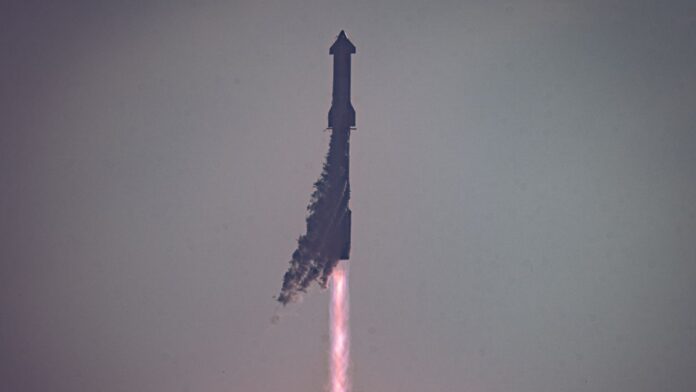SpaceX and the U.S. Federal Aviation Administration (FAA) are seeking to dismiss a lawsuit brought by a coalition of environmental groups, according to media reports.
That lawsuit was filed in the aftermath of the first-ever launch of SpaceX’s fully stacked Starship vehicle, which occurred April 20 from the company’s Starbase site in South Texas.
The liftoff sent chunks of concrete and other debris raining down on Starbase’s surroundings. Pieces of Starship itself came down as well: The vehicle suffered a few anomalies, leading SpaceX to send a self-destruct command that was enacted about four minutes after liftoff, while Starship was high over the Gulf of Mexico.
These details were noted by the lawsuit, which claimed that the FAA didn’t properly assess the environmental damage that could be caused by launches of Starship, the biggest and most powerful rocket ever built.
Related: Relive SpaceX’s explosive 1st Starship test in incredible launch photos
The lawsuit, which you can read here, calls on the FAA to write up an environmental impact statement (EIS) for Starship activities at Starbase, a more complete review of the project than the agency has conducted to date.
Such an action, if implemented, could delay Starship’s development considerably, as the vehicle would not be able to fly again until the EIS was finished. (Starship is already grounded while the FAA investigates what happened on the April 20 flight, but that hiatus is not expected to be too lengthy.)
But both SpaceX and the FAA are pushing back, filing paperwork to dismiss the suit, according to The San Antonio Express-News.
In a June 30 filing, the FAA wrote that the groups that brought the lawsuit “lack legal standing for their claims,” The Express-News wrote on Monday (July 3).
“Separately, a SpaceX filing said the first Starship launch on April 20 provided no cause for the FAA to conduct a new environmental assessment, a process that could halt further test launches for years,” the outlet added.
SpaceX is working to strengthen the orbital launch pad at Starbase so it won’t break apart again during Starship launches, as happened on April 20. The company is also making “well over 1,000” changes to the vehicle in advance of its next launch, which could come within the next month or so, according to founder and CEO Elon Musk — provided there are no regulatory hurdles to clear.

